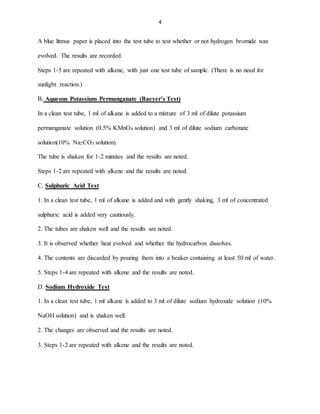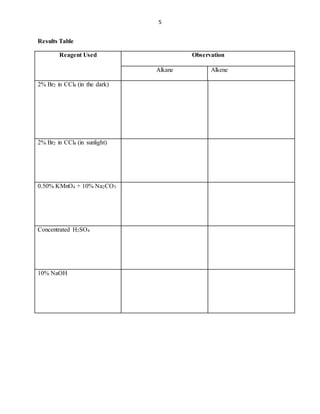This experiment aims to identify alkanes and alkenes by their reactions with different substances and determine their properties. Cyclohexane and cyclohexene are used as representative alkanes and alkenes, respectively. A series of tests are conducted including bromine, potassium permanganate, sulfuric acid and sodium hydroxide tests. The results show that cyclohexene is more reactive than cyclohexane due to the presence of a carbon-carbon double bond, undergoing addition reactions, while cyclohexane only undergoes substitution reactions. This supports the hypothesis that alkenes are much more reactive than alkanes.












